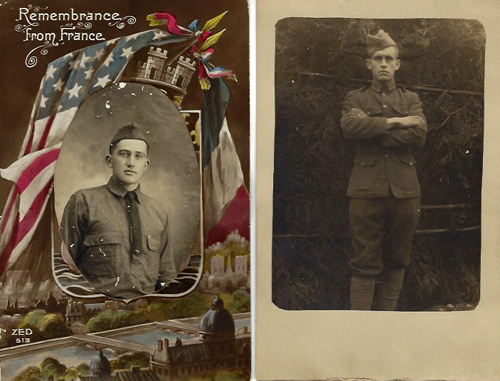
Like many soldiers overseas, Bowling Green’s Ray Howell (1893-1977), who served in the U.S. Army from July 1918 to September 1919, exchanged correspondence with the folks at home. Often included were personalized postcards with a photograph meant to assure the family that their boy was hale and hearty.
One of Ray’s correspondents was his sister Maud, but the reply to her letter of December 3, 1918, complete with postcard portrait, was not quite what she expected. “You start your letter Dear Brother,” it read. “Sorry I cannot claim you as a sister I only have one and her name is Grace.” None of the other personalities mentioned in Maud’s letter rang a bell: no “Uncle Ira,” no “Eli”—indeed, the writer “had no relations in Kentucky that I know of.”
Ray, of course, hadn’t contracted amnesia. This was a different “Ray Howell,” a private with the American Expeditionary Forces occupying Germany after the Armistice, to whom Maud’s letter had been sent by mistake. But he had read its contents carefully, and his reply betrayed his eagerness to win a pen pal as he impatiently awaited demobilization. “I have been here 2 yrs this coming June,” he wrote, referring her to an enclosed picture showing a uniformed young man with arms crossed who bore a startling resemblance to Maud’s brother. “You can see by the stripes I wear on my lower part of left arm. Each one represents 6 months 3 of them 4 in June.” Further, if another letter were to come from his newfound “sister,” perhaps they could be strangers no longer. Of the mistaken identity, Ray concluded, he was “hoping to get an explanation on this subject and hearing from you very soon.”
Click here to access a finding aid for the papers of Ray Howell, including the letter from Ray Howell #2, part of the Manuscripts & Folklife Archives collections of WKU’s Department of Library Special Collections. For more of our World War I collections, browse here or search TopSCHOLAR and KenCat.
